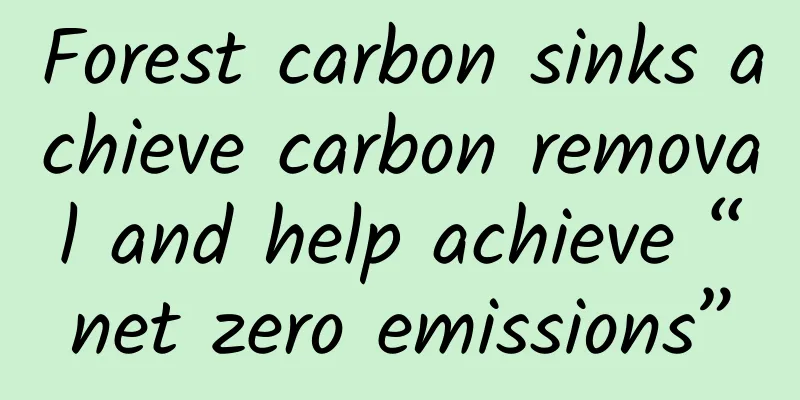New energy vehicles have seen both glory and scandal this year

|
Before the arrival of 2017, the "shoe" hanging over the heads of many new energy vehicle companies finally fell. After the Ministry of Finance of the People's Republic of China publicly exposed some typical cases of serious "subsidy fraud" in new energy vehicles in September 2016, on December 20, 2016, the Ministry of Industry and Information Technology of the People's Republic of China announced the administrative penalty decision on Suzhou Jinlong and other four companies involved in the case. This made the other car companies on the list of nearly 100 suspected new energy "subsidy fraud" that was circulated in the market feel somewhat relieved. Subsidy fraud has become a major scandal in the field of new energy vehicles in 2016. However, the good news is that in 2016, China's new energy vehicle production and sales hit a new high, which not only consolidated China's position as the world's largest producer and seller of new energy vehicles, but also accelerated the pace of marketization of the new energy vehicle industry. Production and sales surge The market has entered a period of rapid development Data shows that from January to November 2016, my country produced 427,000 new energy vehicles and sold 402,000 vehicles, up 59.0% and 60.4% year-on-year respectively, continuing to rank first in the world. It is predicted that with the release of the "Recommended Model Catalog for the Promotion and Application of New Energy Vehicles (Fourth Batch)", the annual production and sales volume in 2016 is expected to reach 500,000 vehicles, which is likely to exceed the cumulative production and sales volume since the promotion of new energy vehicles in recent years, and it will be a milestone year for the development of new energy vehicles. While sales are growing rapidly, domestic automakers are also developing rapidly. From the TOP 20 ranking of global automakers' new energy passenger car sales in the first half of this year, we can see that domestic automakers occupy almost half of the market, with 9 seats. At the same time, the domestic new energy vehicle industry system has been basically established, the technical level has been significantly improved, and great results have been achieved in promotion and application. In addition, enterprises have further increased their investment in research and development, and product performance has improved. The survey results of more than 40 new energy vehicle manufacturers by the China Association of Automobile Manufacturers, China Automotive Technology and Research Center, etc. show that enterprises have generally increased their investment in technology research and development, operation management and quality assurance, accelerated product upgrades, enhanced forward research and development capabilities, and most enterprises have established new energy vehicle product quality operation monitoring platforms. The energy density of lithium-ion power battery cells has reached 220 watt-hours/kilogram, and the system price has dropped to 2 yuan/watt-hour; the power density of the drive motor has exceeded 3 kilowatts/kilogram, which is basically the same as the international level; the charging efficiency, power density, and output voltage range of the fast charging system have steadily increased, realizing functions such as dual-gun charging and mobile payment, and the cost has dropped by more than 30% compared with 2015. Wu Zhixin, deputy director of the China Automotive Technology Research Center, believes that driven by a series of national encouraging policies, my country's new energy vehicle industry has achieved remarkable achievements, achieved the 2015 interim goals of the "Energy-Saving and New Energy Vehicle Industry Development Plan (2012-2020)", and crossed the turning point from industry cultivation to large-scale development. It will continue to develop rapidly in the next five years. Policy Dependence Fiscal subsidies are not as stimulating as purchase restrictions Although both production and sales volume hit new highs in 2016, it is undeniable that the rapid development of the new energy vehicle industry is inseparable from the support of financial subsidies and corresponding supporting policies. According to incomplete statistics from China Times (official account: chinatimes), there were nearly 10 major policies to encourage and guide new energy vehicles issued at the central level in 2016. These policies widely involve batteries, charging piles, driving restrictions, purchase restrictions, national subsidies, vehicle and vessel taxes, etc., covering almost all areas involved in new energy vehicles from production and manufacturing to application and promotion. Not only the policy support given by various ministries and commissions for the national new energy market, but also the intensive new energy vehicle support and subsidy policies issued by various regions have become the driving force for the development of the new energy vehicle industry. Taking Zhongshan City, Guangdong Province, where the motor vehicle market capacity is not large, as an example, the "Zhongshan Electric Vehicle Charging Infrastructure Investment, Construction, Operation and Management Interim Measures" issued by the Zhongshan Municipal Development and Reform Bureau clearly stipulates for the first time that charging facilities for personal use should be included in the sales service system of electric vehicle production and sales companies. Electric vehicle production and sales companies must implement a charging facility for users in residential areas or other related places by themselves or entrust charging facility construction companies. However, a research report from Wilson shows that among the top ten provinces and cities in terms of new energy passenger vehicle sales from January to October this year, the top few are cities that have implemented purchase and driving restrictions. For example, Beijing, Shanghai and Guangdong, which ranked in the top three in terms of new energy passenger vehicle sales in the first ten months of this year with 48,561, 35,214 and 27,175, have successively implemented the policy of shaking (bidding) license plates for traditional fuel vehicles (Guangdong implemented this policy for Guangzhou). During the period when Beijing launched a red alert for smog in December this year, only electric vehicles were not subject to driving restrictions. "Our (electric vehicle) technology is not up to standard, and the reason why we have such a large sales volume is the result of policy-driven development," said Chen Qingtai, chairman of the China Electric Vehicle 100 Association. Wilson's analysts also said, "In 2016, the vast majority of new energy vehicle sales were concentrated in cities that implemented traffic restrictions and purchase restrictions. Unrestricted traffic and purchase are important driving factors for the rapid growth of new energy vehicle sales." The route becomes clearer New energy vehicles hold on to their future "The problems encountered in the development of new energy vehicles (subsidy fraud, policy dependence, etc.) are due to both imperfect policy formulation and consumer awareness, but they are all developing problems." An industry insider said this when evaluating the development of the new energy vehicle industry in 2016, which has just passed. On October 26, the "Energy-saving and New Energy Vehicle Technology Roadmap" was released, which is also the latest policy on new energy vehicles that the industry has been calling for. The roadmap released this time is "1+7", mainly including: overall technology roadmap, energy-saving vehicle technology roadmap, pure electric and plug-in hybrid vehicle technology roadmap, hydrogen fuel cell vehicle technology roadmap, intelligent networked vehicle technology roadmap, automobile manufacturing technology roadmap, automobile power battery technology roadmap, and automobile lightweight technology roadmap. The first aspect of the work carried out in the technical roadmap is to analyze the development of domestic and foreign automotive technology. At present, the world's automotive technology is developing towards low-carbonization, informatization, and intelligence. Overall, the scale of my country's automotive industry has been the world's largest for seven consecutive years, and the overall technical level has been significantly improved. The past three years have been a period of transformation and upgrading of independent brand automobiles. Whether inside or outside the industry, the evaluation of China's independent automobile brands has begun to change significantly, and major progress has also been made in key technology fields. However, compared with advanced countries, due to the late start and weak foundation of my country, it is still big but not strong. The lack of core technology is particularly evident in the field of power batteries, especially the core technologies of single cells and battery management (BMS), which are still far behind foreign companies. "The shortcomings of power batteries are reflected in many aspects. For example, at the material level, domestic high-nickel materials have not yet been industrialized, such as NCM811 and NCA, and there is still no breakthrough in the technical level." Wu Hui, general manager of the New Energy Vehicle Industry Research Center of the China Electronic Information Industry Research Institute of the Ministry of Industry and Information Technology, said. In addition, the prototypes of equipment manufactured by my country's battery monomer companies are mostly from Japan and South Korea, and the precision of the later-imitation equipment is obviously different, resulting in backward production technology. According to the "Technology Roadmap for Energy-Saving and New Energy Vehicles", the sales volume of new energy vehicles will reach 2.1 million by 2020, 5.25 million by 2025, and more than 15 million by 2030. It is undeniable that new energy vehicles are still an important direction for the future development of my country's automobile industry. However, in the past year, new energy vehicles have gone through their own "life and death, honor and disgrace." As a winner of Toutiao's Qingyun Plan and Baijiahao's Bai+ Plan, the 2019 Baidu Digital Author of the Year, the Baijiahao's Most Popular Author in the Technology Field, the 2019 Sogou Technology and Culture Author, and the 2021 Baijiahao Quarterly Influential Creator, he has won many awards, including the 2013 Sohu Best Industry Media Person, the 2015 China New Media Entrepreneurship Competition Beijing Third Place, the 2015 Guangmang Experience Award, the 2015 China New Media Entrepreneurship Competition Finals Third Place, and the 2018 Baidu Dynamic Annual Powerful Celebrity. |
<<: ZTE's logic for making cars: cars are smartphones on four wheels
>>: Japanese automakers face shortage of technology talent and salary levels
Recommend
Heap sort algorithm popularization tutorial
[[121962]] Reference for this article: Introducti...
Tips for developing a big Tik Tok account that attracts a lot of fans!
So what kind of influencers have more long-term a...
Is the investment fee for Tangshan cosmetics mini program high? Tangshan Makeup Mini Program Investment Fees and Process
How much is the investment cost for Tangshan Make...
Short videos put an end to the era of unlicensed operation. The industry under supervision must exercise self-discipline
Recently, the State Administration of Radio, Film ...
As smartphones have developed to this day, I increasingly want to go back to the Nokia era
To be honest, the development speed of smartphone...
The 2022 Central Inspection List is here! Which specific units will be inspected?
In recent years, the central government has arran...
Tik Tok Promotion: The Secret of Tik Tok’s Recommendation Algorithm!
Algorithms are an indispensable evaluation mechan...
Bidding promotion: How do bidders optimize the average price of keywords?
Here, the editor has compiled a wave of common bi...
How much is the price to join Beihai Electric Mini Program? Beihai Electric Mini Program Franchise Price Inquiry
How much does it cost to join an electrical mini ...
A large number of information flow delivery optimization tips and tools are coming!
Launching is a big project! Are you always overwh...
Starting from the death of Lashou: Is group buying O2O the next way to play?
Lashou.com, a group buying website that once had ...
How to write search advertising promotion creatives?
What is creativity? Creativity, in simple terms, ...
How to view Huawei Software Development Cloud's implementation of DevOps in the era of microservices
[Original article from 51CTO.com] Cloud computing...
Lose fat scientifically and embrace health with ease!
Author: Hu Bingjie Zhou Yi Xi'an Medical Coll...
The mobile phone industry is highly mature, but why is it becoming more and more "boring"?
As the mobile phone market matures, more and more...









